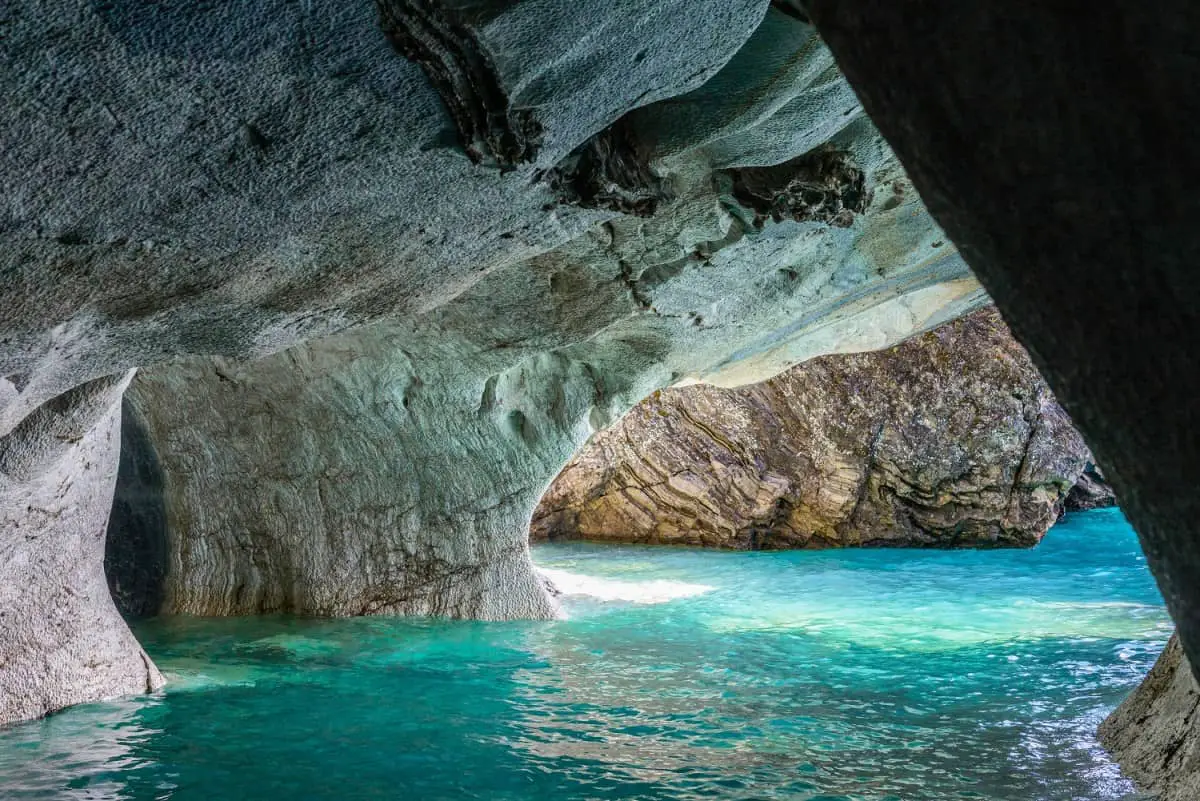There are more than just rocks and bats inside caves. Knowing what to look out for might increase your odds of seeing it on your next adventure, although some of these are pretty rare as we move down the list.
You will find rocks, stalactites, stalagmites, water, fish, lakes, lava, crystals, art, and even sometimes elephants inside caves. Animals that have adapted to living their entire life inside caves have done so over many years, giving them attributes like whitened pigments and cyst-covered eyes.
Besides interesting life forms, there are many types of minerals that sometimes form crystals and other breathtaking scenery.
From the most obvious, like limestone to the most unbelievable, like elephants, as we progress, you’ll learn about some things you never knew existed inside caves.
If you’re ready to get started caving, be sure to read my Beginners Guide and check out my recommended gear section.
Different Types Of Rocks
Foremost, many types of rocks can be found in caves. Here are the most common types, along with some less common.
Limestone
What you’ll see in most caves is a lot of limestone because it’s a key ingredient in speedy cave formation. Limestone is a very common type of rock that dissolves relatively quickly as water flows through it.
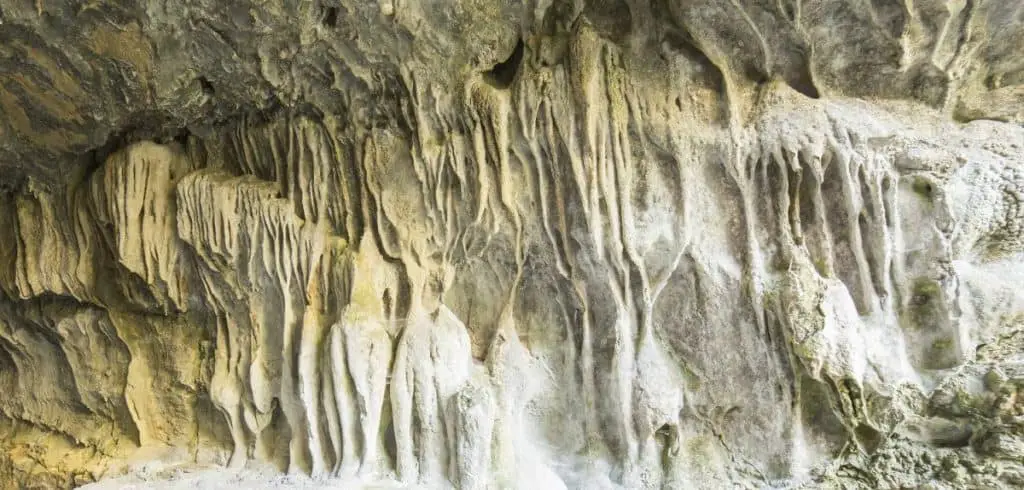
Chalk
Chalk is another material that’s common in caves because it dissolves quickly, allowing for cave formation. It’s a shame because all that dissolved chalk is worth a good amount of money in the mining industry and is predominantly used in the lime and cement industry.
Dolomite
Dolomite rock is a natural bedrock that contains a high percentage of CaMg(CO3)2 and natural caves form within it.
Marble
With only a couple of known instances, marble caves are extremely rare, but do exist. The most visited cave in Europe is the Marble Caves in Crimea, mountainous massif. It’s considered to be one of the most beautiful caves in the world and one of the Seven Natural Wonders of Ukraine.
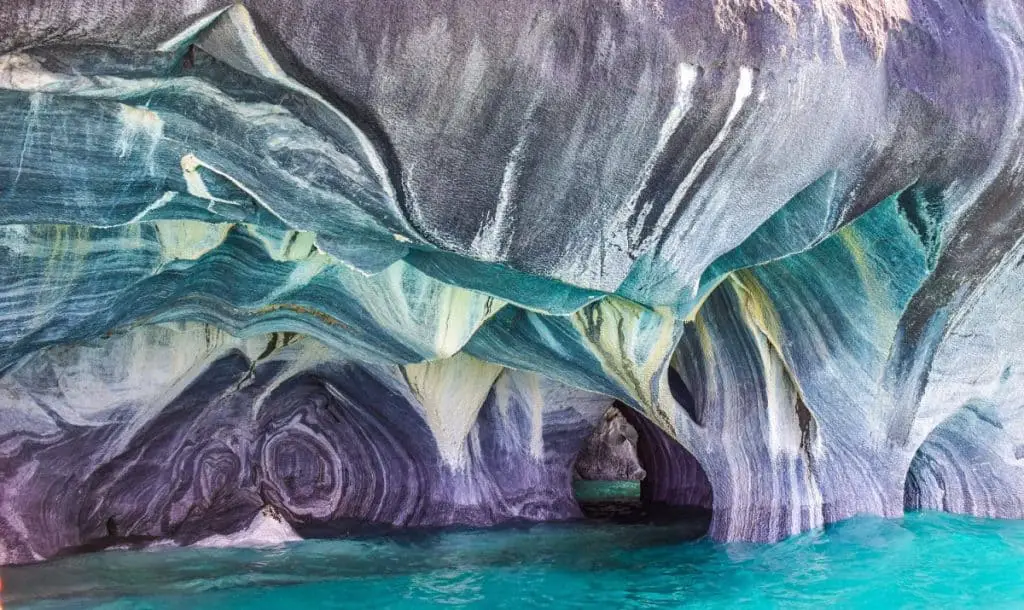
Gypsum
Finding gypsum in caves is also rare, like marble caves. The Cave of Crystals in Chihuahua Mexico is known for large deposits of gypsum crystals.
Water
Water inside a cave is no mystery, but did you know that over 94% of the earth’s unfrozen water is stored underground? That’s quite amazing, considering the size of the oceans. Some caves have such vast amounts of water inside that they’re considered to be lakes.
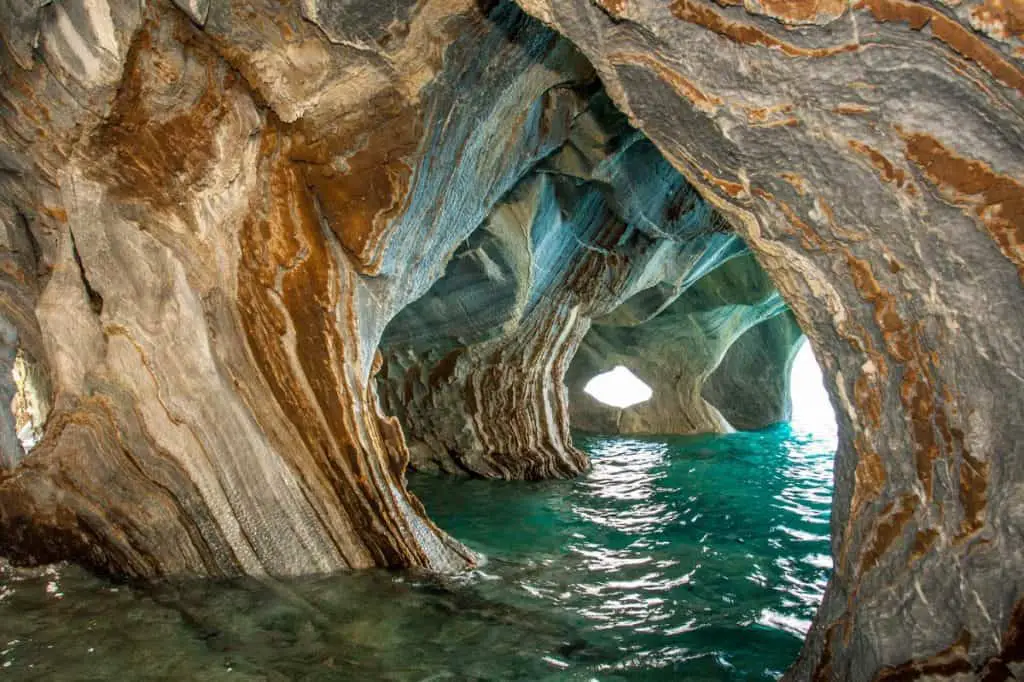
Stalactites
These are cone-shaped structures that form on the ceiling of caves. They vary in material and formation. Here are some examples.
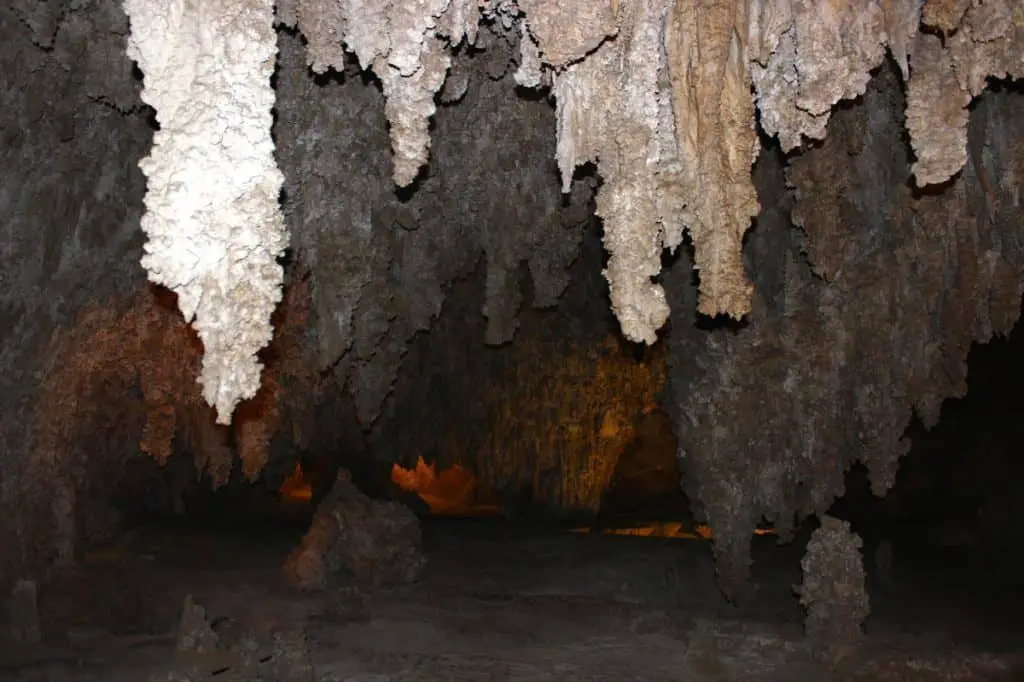
Limestone
Limestone stalactites are the most common type because limestone is so common in caves. As the water drips through the ceiling, it leaves a deposit of calcium carbonate behind to create the stalactites.
Ice Stalactite
These types of stalactites can be seasonal or permanent depending on the climate they’re in. They form as ice melts and drips downwards from the ceiling and then turns into ice again because of the temperature being cooler on the inside of the cave. They also form and grow as air passes by and transfers its freezing moisture to them.
Lava Stalactite
These are formed as lava flows through the ceiling of a lava cave. Unlike the others on this list, these stalactites grow quickly for as long as the lava continues to flow.
Splash Stalactites
This type of stalactite forms when lava splashes on the cave ceiling and then hardens as it drips down.
Tubular Stalactites
Another stalactite that forms in lava tubes when a crust forms on the ceiling, lava between the crust and the ceiling escapes through holes and solidifies on its way out, creating cylindrical stalactites similar to soda straws in solution caves.
Shark Tooth Stalactites
Shark tooth stalactites form when a small amount of lava flows downward from a lava tube ceiling. This happens when the ceiling is only partially solid, as opposed to tubular stalactites that flow through holes in the ceiling.
Stalagmites
Stalagmites are like stalactites in terms of shape, but these form the ground up.
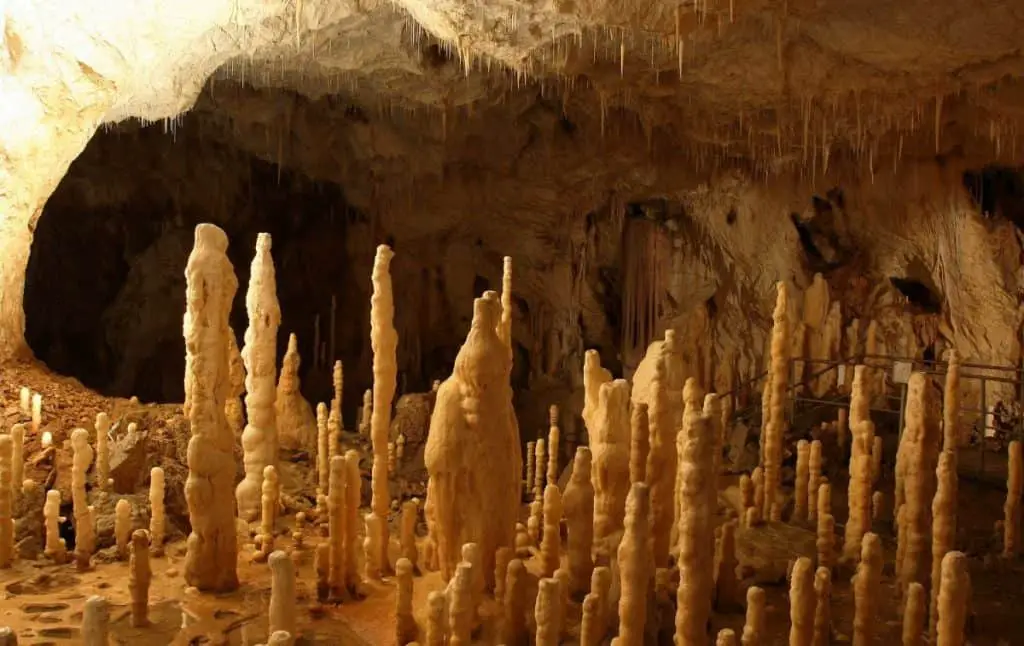
Bats
Did you know that Bracken Cave in southern Comal County, Texas is home to an estimated 20 million bats? These Mexican free-tailed bats go there to roost between March and October.
So while it’s not a guarantee that you’ll see bats on every cave exploration, their preferred roosting and resting location will always be a dark cave.
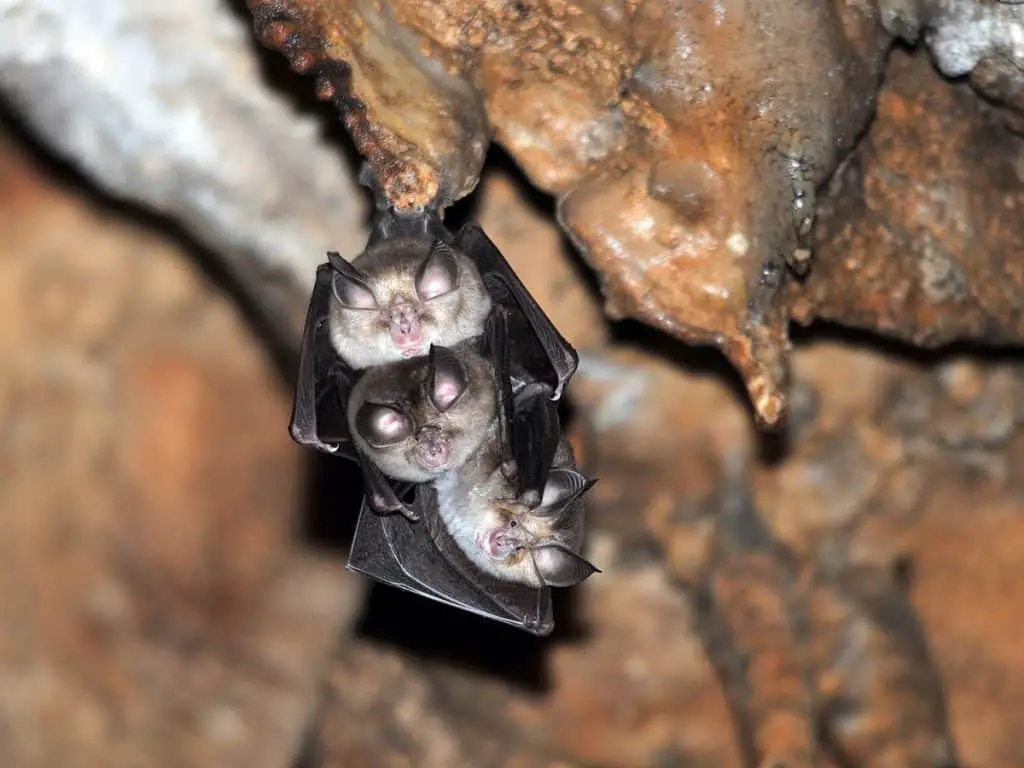
Crystals
Crystals form in caves through a process called nucleation whereby a small number of atoms, ions, or molecules come together to form a shape similar to that of a crystalline solid. This creates the foundation for more particles to land on and grow the crystal.
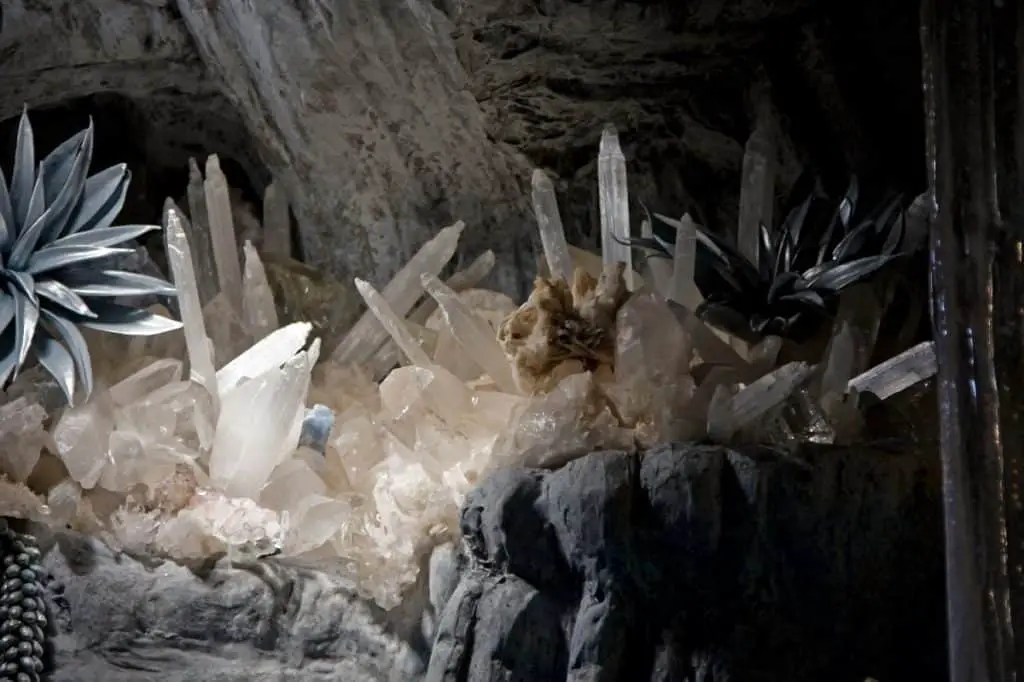
Cave Art
Most cave art discoveries have been made in France and Spain, but many other European countries have also discovered paintings and other forms of art on the walls of caves.
Artists used whatever they had on hand to create these works. Plants, water, animal blood, and urine are just a few common items used to make different colors. If they didn’t paint with their fingers, they would use split sticks, feathers, and hair.
Artifacts
Mussel shells, reed torches, gourd bowls, and woven sandals are amongst the most common types of artifacts you can find in caves. Human remains are also sometimes found from the entrance of the cave and further into the depths of it.
Lakes
Some caves are big enough to feature lakes within them. The Melissani Cave hosts a massive lake where you can be guided by boat. It’s situated on the Greek island of Kefalonia.
Cave Animals
There are so many animals that have adapted to living in caves that there’s a special term for it, troglomorphism. This occurs in many species, such as molluscs, arachnids, myriapods, insects, crustaceans, fish, amphibians, and reptiles. Common adaptations include whitening pigments and eyes going blind during early growth.
Fish That Almost Never Sleep
Blind cavefish in 29 caves around Mexico almost never sleep. They just have frequent resting times and are always very aware of their surroundings despite their lack of sight.
Mummies
Fire mummies can be found along the mountains of Kabayan in the Philippines. It’s believed that they were preserved in this way by drinking a liquid with loads of salt to dry out and preserve them from within. Smoke from a fire dried them from the outside.
Elephants
Around the border of Kenya and Uganda lies a dormant volcano with cave systems within. Elephants are often found in and around these caves chipping away at the walls to break off salt deposits to eat. Being herbivores, they get little salt from their usual diet of plants, and over time they’ve carved quite a bit of the cave away.
Elephants have not adapted to a permanent life in caves, but they do frequently pass through caves to satisfy their hunger for salt and probably to cool off at the same time.
In Summary
So it’s fair to say that there are many thousands of artifacts, paintings, minerals, rocks, and life forms that are found in caves. Some things are certainly rarer than others, but no matter which cave you visit, there’ll be more than just rocks to explore.
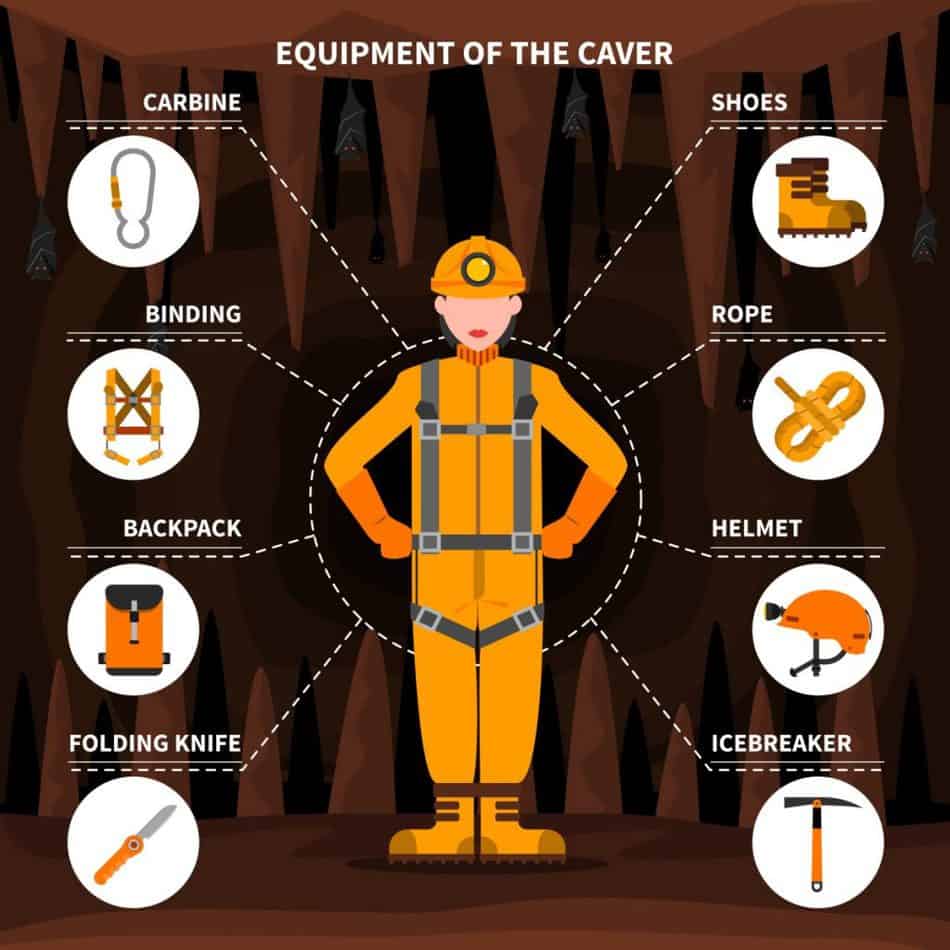
When you’re ready to get started caving, be sure to read my Beginners Guide and check out my recommended gear section.

